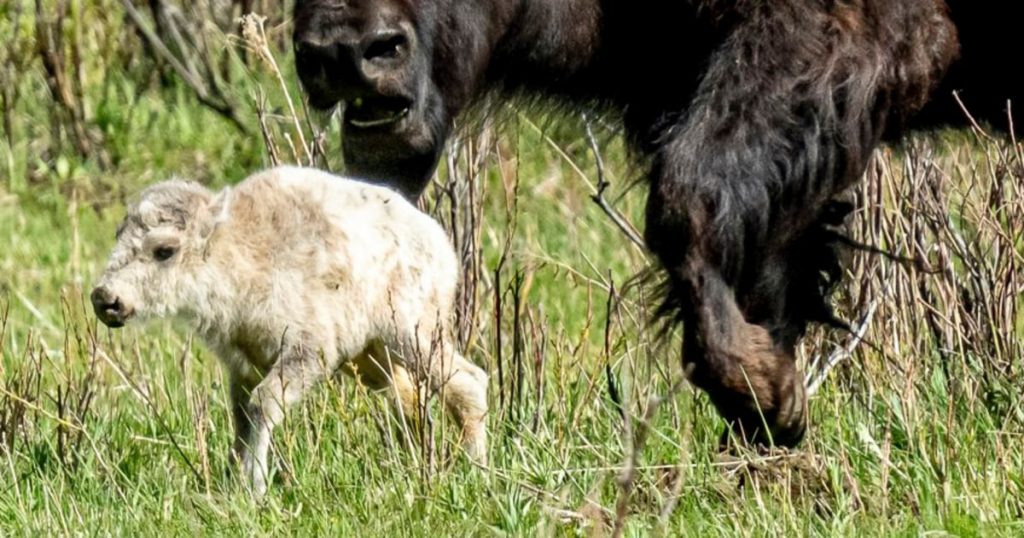The recent birth of a rare white buffalo calf in Yellowstone National Park has fulfilled a Lakota prophecy that signifies both blessings and warnings, according to members of the American Indian tribe. Chief Arvol Looking Horse, the spiritual leader of the Lakota, Dakota, and Nakota Oyate in South Dakota, emphasized that this event is a signal that more efforts must be made to protect the earth and its animals. The calf was born after a severe winter in 2023 led to the killing of thousands of Yellowstone buffalo, also known as bison, sparking a sense of urgency among tribal communities to reclaim stewardship over these animals that have deep historical significance.
The rare white buffalo calf was born on June 4 in the Lamar Valley in Yellowstone National Park, drawing attention from visitors and conservationists alike. Witness Erin Braaten spotted the calf while visiting the park with her family, capturing several photos of the remarkable event. The birth of a white buffalo calf with dark nose, eyes, and hooves is considered sacred in Lakota tradition, symbolizing hope for better times. This birth is seen as a significant milestone akin to the legend of White Buffalo Calf Woman, who appeared when times were dire and bison were disappearing, offering guidance and protection to the tribe.
In Lakota lore, White Buffalo Calf Woman is a divine figure who presented a sacred pipe and bundle to the tribe, teaching them the ways of prayer and connection to the natural world. The prophecy foretells that she will return as a white buffalo calf during difficult times, signifying a message of renewal and healing. The birth of the calf in Yellowstone is seen as a spiritual event, invoking the teachings and wisdom of the ancestors. This rare occurrence has sparked a sense of reverence and awe among tribal communities and conservationists, highlighting the significance of protecting these animals and their habitats.
The birth of the white buffalo calf has prompted a naming ceremony and plans for a celebration to honor this momentous event. The calf’s unique characteristics, including its black nose, eyes, and hooves, are considered evidence of its sacred nature, according to Lakota beliefs. Tribal communities and conservation organizations are rallying around this calf as a symbol of hope and renewal, emphasizing the importance of living in harmony with nature and respecting all living beings. This event has raised awareness about the need for conservation efforts and sustainable practices to protect endangered species like the bison and their habitats.
Despite the rarity of white buffalo births, particularly in wild herds like those in Yellowstone, the significance of this event extends beyond its visual impact. White buffalo are revered in many Native American traditions, signifying purity, spirituality, and connection to the divine. The birth of this calf serves as a reminder of the interconnectedness of all life forms and the importance of preserving biodiversity. As debates continue about bison management and conservation efforts, this event highlights the cultural and ecological significance of these animals and the need for cooperative efforts to ensure their survival and well-being.
In conclusion, the birth of a rare white buffalo calf in Yellowstone National Park has captured the attention and reverence of tribal communities, conservationists, and visitors alike. This significant event aligns with Lakota prophecy and symbolizes hope, renewal, and the interconnectedness of all living beings. As efforts to protect bison and their habitats continue, the birth of this sacred calf serves as a powerful reminder of the need to respect and preserve the natural world. By honoring this symbol of purity and spirituality, we can strive to live in harmony with nature and safeguard the future of endangered species for generations to come.













